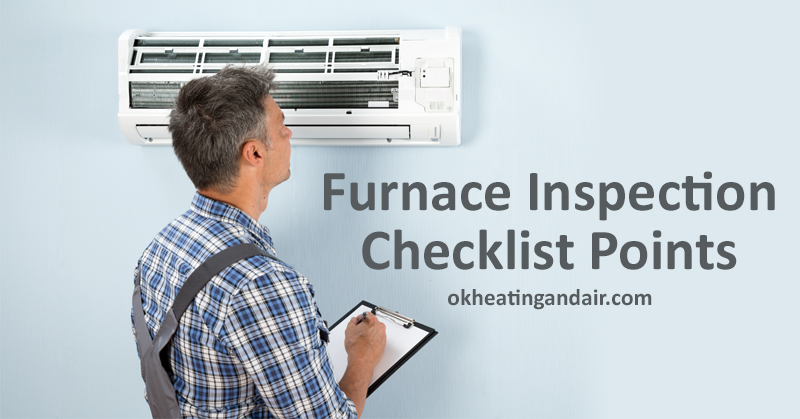Basic Items of Inspection
- Then, using your CO detector test the air going through the heat exchanger to be sure there is no CO going into the house. This will tell you if there is a cracked heat exchanger or not. Note that you may need to drill a hole into the venting to insert the CO detector probe. You do not want to see the detector register any level of CO whatsoever. Leave the probe in the air stream for thirty seconds to one minute.
- Inspect the outside of the furnace for any signs of damage, cracking, dents or corrosion.
- Inspect the flue pipe. Examine it for damage and ensure that there is a backfall into the furnace for collecting moisture.
- Next make sure that the gas line is in good shape and does not have any leaks. Remember, any leak anywhere in a furnace can be dangerous.
- Use a gas detector, or sniffer, to check for gas leaks. Run it around all of the connections on the gas line.
- Pull the cover off the furnace to inspect the inner workings.
- Check the condition of the burners. Clean them as necessary. Inspect them for corrosion. LP gas has a lot of moisture in it and a tendency to rust out burners. A small amount of rusting is acceptable.
- While the cover is off, start the furnace and observe how it ignites. The first thing that should occur is the inducer motor should turn on. Next watch for a red glow and then ignition of the gas.
- Observe the furnace for a few minutes to be sure it doesn’t short cycle. Which is when it runs for a few minutes, overheats and then shuts off, cools down and starts up again.
- Next examine the flue gasses using the CO probe. The levels should be 25 PPM or less. Up to 50 is acceptable. Anything over that will require the furnace to be serviced.
- Examine the furnace filter. Ensure that the client knows where the filter is and how often they need to change it.
Further Points of Furnace Inspection
- Check and adjust the fan switch.
- Clean and adjust the pilot and pilot assembly as needed.
- Inspect proper operation of the safety controls.
- Observe and record the operating temperatures.
- Inspect and adjust the belts and pulleys as needed to ensure trouble-free operation.
- Measure voltage and amp draw to diagnose any potential problems.
- Check and calibrate the thermostat.
Furnace inspections should be done at least once every two years for units that are under 5 years old, anything older then 5 years you want to have it serviced yearly. Also check with the manufacture and make sure you dont need a yearly checkup to keep your warranty in good standing. For more information on furnace or HVAC maintenance be sure to follow the O.K> Heating & Air Conditioning blog.

